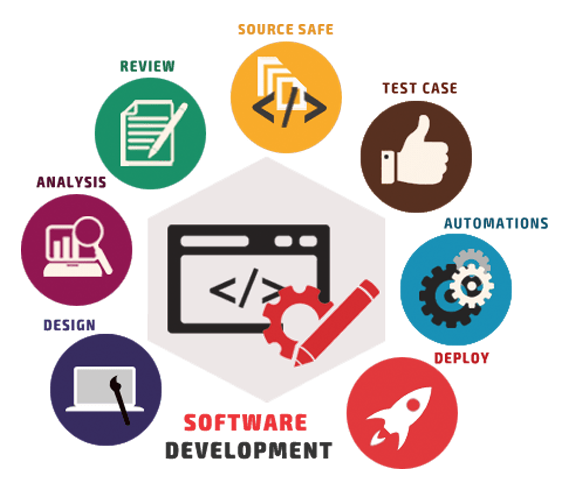
IT Development
Software development has reached a tipping point in terms of the speed of innovation. In almost every industry, software is used to solve user problems. Software trends are evolving so fast that companies need to be proactive to catch up with their backlog and start the Software Development Life Cycle (SDLC) to ensure fast and quality delivery.
1.Requirements Phase: The requirements definition is the part of the plan that defines what the application must do and what requirements it must meet. For example, a social networking application needs to provide a way to communicate with friends. An inventory application may need to provide a search capability. Identifying the resources needed to implement the project is also part of the requirements.
2.Design Phase: In the design phase (SDLC Phase 3), the software developer verifies that the developed software meets all end-user requirements. The project is technically, practically and economically feasible. Once the best design method has been determined, the developer chooses a programming language suitable for the software, such as Oracle or Java..
Once the design specifications are finalised, all parties review the design and provide comments and recommendations. It is important to collect the stakeholders' recommendations and include them in the document, as small errors can lead to cost overruns.
3.Development Phase:This stage is carried out by the developers working on the implementation of the concept. Developers create a KLOC (thousands of lines of code) in a programming language they are familiar with. The aim of the development team is to achieve rapid development while ensuring high quality. The development team can release the software all at once, as in the case of waterfall development, or release it in several parts.
4.Testing Phase: Software development is not the end of the process. It must then be tested to ensure that it is bug-free and that the user experience is not compromised. During the testing phase, developers must test the software to find bugs, fix them and test it again.
5.Application Phase: After testing, the overall development of the software is carried out. To find more bugs and flaws, the developer usually uses a learning environment to integrate different modules and designs into the main source code.
The computer system is then integrated into this environment and finally installed. Once this stage is complete, the software is theoretically ready for the market and available to all end-users.6.Maintenance phase: The SDLC does not end when the software is released on the market. The developer must enter maintenance mode and initiate the necessary actions to resolve any problems reported by end-users. In addition, the developer is responsible for implementing any necessary changes after the release of the software.
